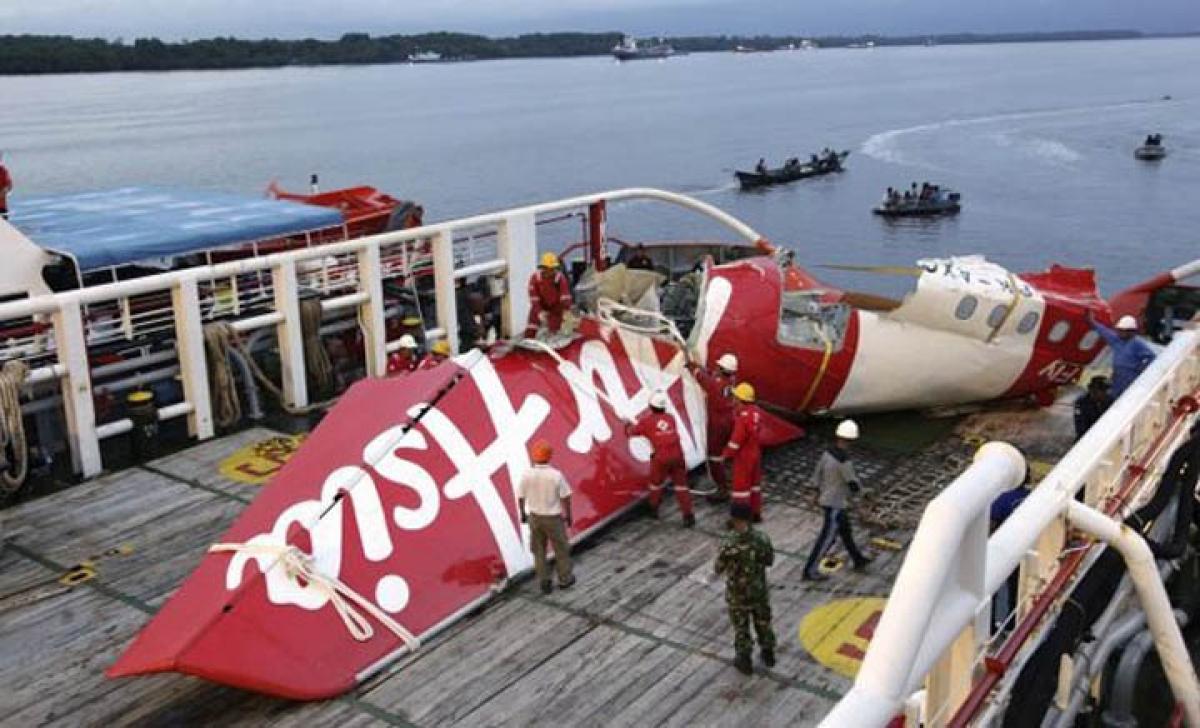Live
- Ahsaas Channaopens up about her complex character in ‘Mismatched 3’
- Radhika Apte welcomes first child, shares heartfelt post
- Jacqueline dazzles at Da-Bangg Reloaded concert
- Time to boost measures to prevent drowning, save children: WHO
- TDP achieves milestone with 73 lakhs membership registration, says Chandrababu
- South Korea: Main Oppn hails Yoon's impeachment motion passage as 'victory for people, democracy'
- RG Kar issue: Tension flared over parallel protests by Congress, SUCI(C) outside CBI offices
- After furore, Central Railway revokes order to raze Lord Hanuman Temple at Dadar
- Now hoteliers' body in Bengal's Alipurduar shut doors for Bangladeshi tourists
- District Collector Encourages Students to Utilize Government Facilities for a Better Future
Just In

x
Highlights
A new probe into what sent an AirAsia flight plunging into the Java Sea last year, killing all 162 people on board, has pointed the finger at poor pilot training on how to cope with emergencies.
A new probe into what sent an AirAsia flight plunging into the Java Sea last year, killing all 162 people on board, has pointed the finger at poor pilot training on how to cope with emergencies.

The final report from Indonesia's national transport safety agency said an existing fault in the system that controlled the Airbus A320-200's rudder had set off a chain of events that caused the crash.
But it was the pilot's decision to reset the system, which turned off the plane's autopilot, and inexperience in flying in such difficult conditions that then sent the aircraft into a sharp roll from which it never recovered.
"The flight crew had not been trained for the upset recovery training on Airbus A320," said the report, adding that the plane had gone into a "prolonged stall condition that was beyond the capability of the crew to recover".
The report provides the latest clue into what brought down Flight QZ8501 on December 28 last year, during what was supposed to be a routine flight from the Indonesian city of Surabaya to Singapore.
The bodies of 56 people have never been recovered, despite a huge and lengthy international search involving ships and aircraft from several nations in often stormy seas.
Investigators had previously blamed bad weather for bringing down the plane, but the new findings show both poor equipment and inadequate training for emergency situations were to blame.
The fault with cracked soldering in part of the plane's rudder system -- which had already caused glitches 23 times in the previous year -- sent repeated warnings to the pilots.
The co-pilot was then left to fly as the pilot responded to the fault, but could not cope with the situation, and miscommunication between the pilots as they plunged towards the sea compounded the problem.
"It's a scenario that has played out in air accidents in the past," Terence Fan, aviation expert at the Singapore Management University, told AFP.
"Pilots are either distracted by a faulty equipment or cannot properly solve the issue and something else is brewing in the background."
The loss of Flight QZ8501 was the first major crash for Malaysia-based AirAsia, but analysts said the findings could prove a setback after a successful 13-year run.
"This will have a detrimental impact on AirAsia as a whole and it comes at the worst time for the airline given the very poor third quarter numbers that came out last week," said Shukor Yusof, analyst with Malaysia-based Endau Analytics.
"AirAsia's image will be dented because the report alleges that they don't maintain their aircraft properly and their cockpit crew responded inadequately to such an incident."
Speaking as the report was released, investigator Nurcahyo Utomo said AirAsia pilots were not properly trained on handling Airbus aircraft when they were severely destabilised as it was not recommended by the manufacturer.
But the former head of France's aviation authority, the BEA, which governs France-based Airbus, said AirAsia had not followed the agency's rules on training.
The BEA set new regulations for pilots after an Air France flight between Rio and Paris was lost in the Atlantic Ocean in 2009, under similar circumstances to the AirAsia flight.
"Several recommendations of the (BEA) on the subject of pilot training were clearly not implemented by this aviation company," former BEA director Jean-Paul Troadec told AFP.
Gerry Soejatman, an aviation consultant with Jakarta-based consultancy CommunicAvia, said both the AirAsia crash and AF447 had happened after a technical problem followed by the plane stalling.
"It's all in the manual, but we still have these two cases where the pilot did not do the right thing in stall recovery," he told AFP.
"It's likely that they did not realise they were in a stall or did not have adequate training in how to exit from a very severe stall at high altitude."

Next Story
More Stories
ADVERTISEMENT
© 2024 Hyderabad Media House Limited/The Hans India. All rights reserved. Powered by hocalwire.com







